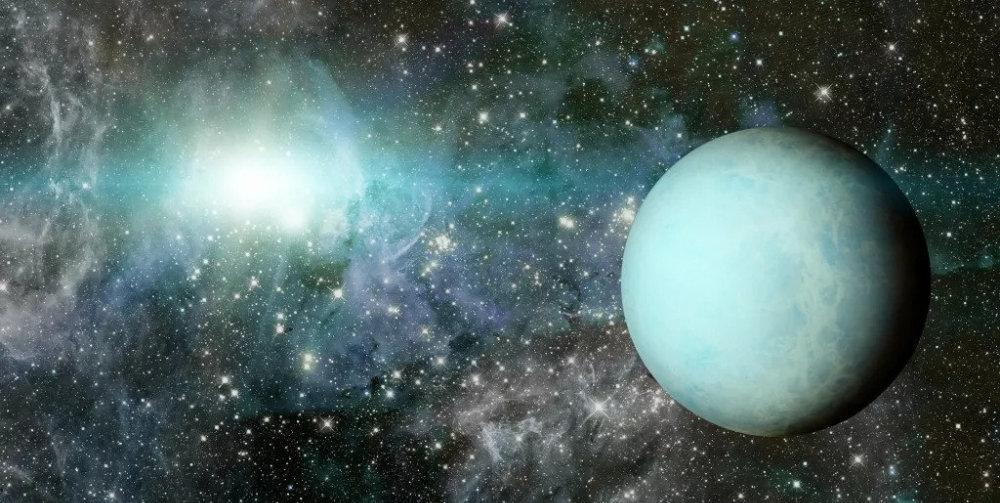Curious children ask: Which is the coldest planet in the solar system?
The heat in the planets' interiors comes from the energy they had left over when they were born.

(Image: NASA)
Brad Gibson is Director of the Edward Arthur Milne Centre for Astrophysics and Head of the Department of Physics and Mathematics at the University of Hull, UK.
Seven-year-old boy Sahar from Bangalore, India, asked the question: Which is the coldest planet in the solar system?
The planets in the solar system are all heated by the sun. The Earth we are on is about 100 million miles (about 160 million kilometers) from the Sun, a distance that allows the Planet to have a temperature suitable for life.
You might think, then, that the coldest planet in the solar system should be Neptune, the furthest from the Sun. Its distance from the Sun is an incredible 3 billion miles (about 4.8 billion kilometers).
In reality, however, the coldest planet in the solar system is not Neptune, but Uranus. Even though the distance between Uranus and the Sun is a full billion miles (about 1.6 billion kilometers) shorter than Neptune' , NASA data suggests that Uranus has always held the record for the lowest temperature ever measured in the entire solar system: minus 371 degrees Fahrenheit (minus 224 degrees Celsius), what a chilly place! Of course, Neptune is also very cold, but its surface minimum temperature is about minus 353 degrees Fahrenheit (minus 214 degrees Celsius), which is indeed inferior to Uranus in terms of low temperatures.
This is a photo taken by the Hubble Space Telescope that shows Uranus orbiting 4 major rings and 10 of the 17 moons. (Image credit: X-ray band: NASA, Chandra X-ray Observatory, University College London, W. Dunn, et al.; optical band (high-resolution camera): Keck Observatory in Hawaii, USA; Optical band (very large telescope and high-resolution camera): European Southern Observatory, Very Large Telescope, Kirill Feigelman)
Uranus's low temperature doesn't really have much to do with the distance between it and the Sun. Billions of years ago, a huge celestial body collided with Uranus so violently that Uranus was knocked upside down in one direction. Until now, when Uranus orbits the sun, only one side has the opportunity to face the sun. Not only that, but the violent impact in the past also caused some of the energy inside Uranus to be lost into the space.
The heat in the planets' interiors comes from the energy that was left over when they were born. Planet formation is a multi-million-year-long process during which smaller rocky blocks collide with each other and join together, piecing together little by little into an entire planet. Every time a rock merges into a planet, the planet's heat increases a little. Just like if you keep clapping your hands, after a while your opponents get a little hot – the things that happen during planet formation are pretty much the same.
Neptune has never been hit by a giant asteroid like Uranus, so it can retain more heat.
Of course, you should also be surprised by the situation of another planet, and that is the closest planet to the Sun, Mercury. On the surface of Mercury, there are also extremely cold places. While Mercury faces the side of the Sun and is warmer than 750 degrees Fahrenheit (400 degrees Celsius), its side facing back toward the Sun is almost minus 328 degrees Fahrenheit (minus 200 degrees Celsius).
The temperature difference between Mercury's surface is so large, mainly because Mercury's surface does not have an atmosphere like Earth's. The atmosphere acts like a blanket for a planet, wrapped around the planet's surface, holding the heat and helping it spread throughout the planet. Because Mercury does not have such a blanket, Mercury's two sides facing the sun and turning its back to the sun can be described as a double heaven of ice and fire.
Measure temperature in the universe
For planets that are relatively close to Earth, such as Mars, we can directly launch a probe to reach its surface and probe its atmosphere. So far, however, we haven't been able to reach the surfaces of planets as far away as Uranus and Neptune.
So, we had to look for ways to measure the planet's temperature directly from the Earth's surface. For example, we can study the light reflected from a planet, which can tell us which atoms and molecules the planet's atmosphere is made up of. Information about the composition of the atmosphere can help us know exactly the temperature of a planet, because the atoms and molecules in it act as a "fingerprint" for a planet.
Although planets like Uranus and Neptune are already very cold in our solar system, there are places in the more distant universes that are even colder than them. The coldest place known so far is the Spiral Dart Nebula. The Boomerang Nebula is a cloud of gas and dust three hundred billion miles (about 480 billion kilometers) away, where temperatures reach minus 457 degrees Fahrenheit (minus 272 degrees Celsius).
It's important to note that nowhere in the universe can the temperature fall below minus 459 degrees Fahrenheit (minus 273 degrees Celsius). At such temperatures, the particles that make up all the matter, as well as the atoms, stop moving. Once this happens, there is no way for the substance to get colder, so this temperature is called "absolute zero degrees.". This means that we will be unlikely to find a place in the universe that is colder than the Boomerang Nebula.
BY: Brad Gibson
FY: Mo Yu Chen
If there is any infringement of the relevant content, please contact the author to delete it after the work is published
Please also obtain authorization to reprint, and pay attention to maintaining completeness and indicating source